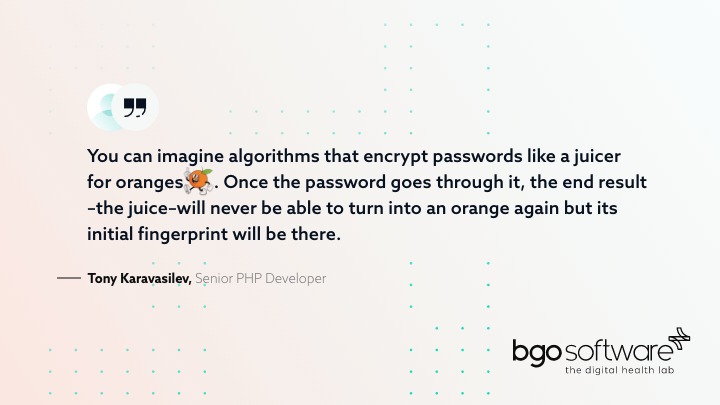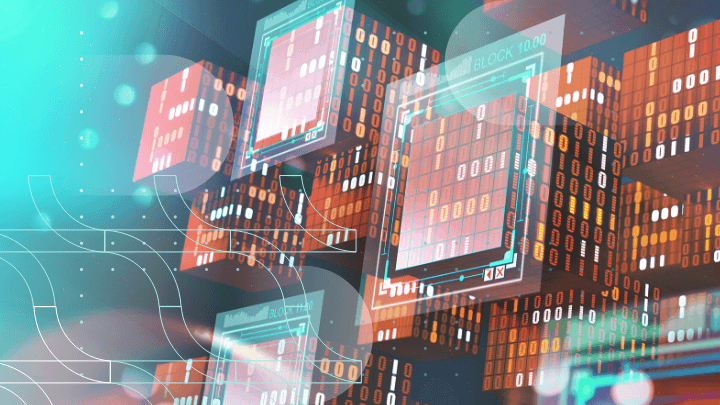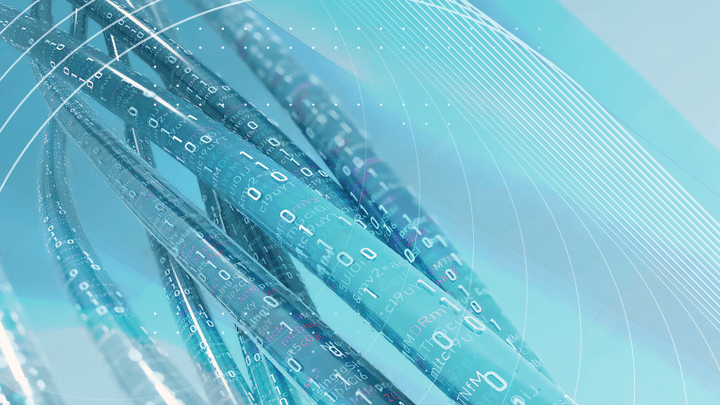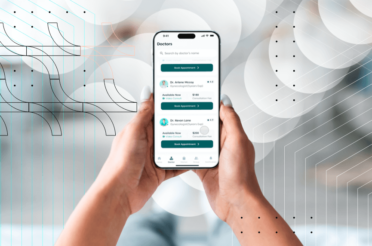We live in a world where technology does not only play a part in society but actively makes our society what it is today. We use technology to better our lives however we can – be it for work, for banking, for our entertainment, or, of course, in our healthcare systems.
No one can deny the role IT infrastructure has taken up in our day-to-day lives. To have this role be beneficial for us and our development, however, we must make sure that these integral technologies are secure.
There are many different types we can make the software we use safe from theft, perpetrators, or misuse.
BGO Software aims to confront the whole issue of security with the help of our experts as we take a deeper look at the world of IT cybersecurity and how we can be better prepared when discussing and dealing with it ourselves.
Source code security
The source code is the main code base that makes up the entire software application. Ensuring this code is protected is of utmost importance since it represents the building blocks of any software.
If someone has access to the source code they can modify it for potentially malicious purposes. What should be taken into consideration as well is the trust users put into an application, especially when it comes to their personal information. If your software isn’t guarded well enough, people won’t want to use it.
Our expert, Tony Karavasilev gives many valid examples of what exactly we can do to protect the source code from any such potential threats. The first step software developers could take in order to protect their code base is to implement a complex password policy that ensures there are no weak passwords that guard access.
It is fair to say that passwords play a big part in protecting data, but they are not alone. Another method that should not be ignored according to Tony Karavasilev is restricting access to VPN networks alone.
Since source codes should only be accessible to authorized personnel a VPN (Virtual Protected Network) is a great way to guarantee more security. The way a VPN does that is by making sure that the needed information, in this case, the code base, can be accessed by devices that are on this virtual network.
This creates a couple of layers of security including encryption of the network itself, authentication of the user, and protection from public networks while allowing for a safe remote connection.

Enhance Your IT Security with Expert Guidance
Connect with our cybersecurity specialists today and discover how our advanced IT solutions can protect your healthcare systems.

Encrypted connections
There are two main ways that our expert gives an example of when it comes to encrypting a connection for the security of your source code. One is HTTPS (Hypertext Transfer Protocol Secure) and SSH (Secure Shell). Both are used in the secure transmission of information and the integrity of data.
HTTPS is a direct extension of HTTP, which is used for establishing connections between web browsers and web servers. What the secure protocol offers as an addition to the normal one is an extra layer of protection when initiating data transfer between the server and the browser.
The entire process relies on the encryption of data, which happens as the web browser makes the connection with the server. By using HTTPS all information that is exchanged between the two portals is encrypted so that an outsider can’t just interfere with the exchanged data.
HTTPS has been a great way for Internet users to identify safe websites they can visit.
SSH, on the other hand, is a cryptographic network protocol used for safe remote access to systems and/or devices that are not on a secure network. The protocol utilizes strong encryption algorithms to establish the connection between a computer and a device remotely so that any kind of exchanged data is absolutely confidential.
The way SSH works is not through passwords. It works with a public and private encryption key. The user in this case gives the server their public key and the server matches it to the existing public keys in its database.
If the key matches, the server sends the user an encrypted message that can only be decrypted with the private key the user should also have. If the private key is correct and the message is decrypted a connection can be established with the server and all kinds of data can be transmitted.
This includes file transfer with tools like SCP (Secure Copy Protocol) or SFTP (SSH File Transfer Protocol).
Passwords and secret keys storage
Passwords are the main way we protect information we don’t want just anyone to have access to. Our expert states there are many ways to protect your passwords as well.
If someone gets ahold of your password, then everything that the password was intended to protect is no longer safe. And that’s why they should be kept safe as much as possible.
An essential rule of thumb, which everyone trying to safeguard their passwords should understand, is to never store raw passwords. What this means is that when keeping a password somewhere, it should never be under its initial form like a word or a number. It should always be one-way encrypted.
The example Tony Karavasilev gives us is with an orange juicer which is a great way to explain encryption. What it fundamentally does is change the password into some form of data, which is often a hash. The hash can’t exactly be returned to its original form as the password, but it can still be used as one as the initial fingerprint of the password is encoded in it.
A great example of this would be usernames and login passwords. What a hashmap does is provide a place where this information can be stored. A hashmap is a data structure that can perfectly store such information.
The reason why it is so secure is that any given password is not stored as plain text, but is instead converted into a hash value – the orange juice in the metaphor with the juicer. Computationally speaking, a hash value would be extremely difficult if not impossible to turn back into the original password.
The intention behind this is that even if the database with the user credentials is hacked, the perpetrator cannot get the original passwords.
User authentication
As we have mentioned, there are different tools and technologies to protect passwords from being stolen and hacked. According to Tony Karavasilev, however, there are also methods software can use to add bonus layers of safety to the entire authentication process.
One way to accomplish this task is to integrate MFA (Multifactor Authentication). The process of MFA makes sure to give more than one step of authentication for users. If only given a password and username, the login isn’t as safe as when a phone number or email verification is added to it as well.
Anyone can type in your password and username if they have them, but to verify a sign-in through an email or via a telephone, they would also have to have access to them.
Enabling a login interface to only allow a limited amount of tries before it locks the system also prevents malicious software from strongarming the entire login process by checking millions of possible password combinations.
This is more specific to protecting your data from a bot, of course. But in any case, it doesn’t weaken the security measures when it comes to human hackers. A very common method to protect login is by using reCAPTCHA which is another specifically designed tool to limit bot activity.
Application security basics
When developing an application there are many different aspects that require close consideration. The first one that should be mentioned is the integration of access control roles.
The infrastructure of an application should account for different levels of access that are not always simply divided into user and admin. A larger scale application can have clients that only see a surface level of the entire software.
Employees in such a case who work with the clients would also be considered users but in a different sense and able to access different aspects of the software. There would usually be administrators who can be the developers themselves and administrators in the workplace. All roles have to be figured out before the development stage.
A good practice to ensure the safety of an application is by setting up password policies. Many different applications do this in a multitude of ways – by prompting users to put special symbols, numbers, capital letters, and even punctuation into their login credentials. Many such applications partner with password generators that are safety-approved and legally certified.
Cross-site defenses
There are two main web application vulnerabilities that Tony Karavasilev discusses in his lecture. These are XSS (Cross-Site Scripting) and CSRF (Cross-Site Request Forgery)
The first one we will address is XSS. It is a vulnerability in websites that allows for the injection of malicious scripts into pages that can steal sensitive data, manipulate user sessions, and change website visuals.
There are a few ways that a website application can be protected from such attacks. One of the best ways a developer can do that is by using input authentication.
“Someone can write javascript into one of your input fields and change your entire website. Always validate input and never trust it.”
According to our expert, a great way to guard your application from such attacks is by implementing input authentication which makes sure that what a user has written is not a malicious script.
Another method of protection is the implementation of a CSP (Content Security Policy) header that restricts the sources of content that can be loaded on your webpage. This helps prevent the execution of malicious scripts.

Secure Your Healthcare Projects with Cutting-Edge IT Solutions
From multifactor authentication to operating system security, our team delivers tailor-made solutions that ensure the highest level of protection for your software and data.
The second type of vulnerability most web applications are exposed to is CSRF. This weakness tricks users into executing unwanted actions on websites where they are fully authenticated.
The vulnerability is exploited through the forgery of requests that execute said actions. A way to deal with CSRF is by implementing CSRF Tokens which give any action an individual token so the database can crossreference that token with its data and make sure a given action is authentic or not.
Making cookies be only same-site is also an option. What this means is that any cookies that a site saves specifically pertain to the site itself and don’t reference any other outside websites or functions that can copy information. Keeping web application frameworks, libraries, and components up-to-date is another way to deal with CSRF vulnerabilities.
Operating system security
Our operating systems are the reason why our hardware works. They are the operators of all the different parts that allow us to use these technologies in the first place. That is why it is so important to make sure the operating systems of our devices are kept safe from malicious intent and cyber-attacks. According to Tony, there are several ways to do just that.
One of the main things that needs to be taken into consideration is a good firewall. The essential purpose of a firewall is to manage incoming and outgoing network traffic.
Most cyber-attacks happen because harmful software has gotten into our network and once inside there is no stopping it. Investing in a good firewall which can be both a software one or a hardware one is never a bad idea if you want to keep your network safe from outside attacks.
Anyone who’s ever gotten a virus on their device knows how much such a thing disturbs their interactions with any kind of software they have. That’s why a good practice is to always have an antivirus system installed on your device that will add an extra layer of protection. Antivirus software can’t protect you in every single case, however.
Enabling auditing and logging features can help track and review security events and user activities. Logs are essential for identifying and investigating security incidents.
Performance price
Clearly, investing in our software’s security is a matter that requires serious consideration. It has to be said, however, that such an investment will probably not always be a cheap one the more safeguards we choose to implement.
Tony explains the different factors that go into the making of said prices:
- There is a necessity for the system to be fast for obvious efficiency. But we also want our system to be secure. And when adding layers of security to something that could slow down all processes. That is why balancing the two is one of the key factors in figuring out a price for a certain software.
- The usability of a system is a fundamental part of whether it functions properly. Implementing different security measures can obstruct that functionality. The examples our expert gives are how the additional login can take time and how an antivirus system can take up a big chunk of the software power if not set up properly
- Allowing your users to introduce not-friendly features is something that can slow the system and make it more insecure, but otherwise, your system lacks any kind of customizability
“Balancing between speed and security is crucial in the development of software. If you fail at this task, you and your users will suffer.”
Backups and restoration
There is always a risk that everything you have saved and built safeguards around can be lost due to some hack or even software malfunction. That is exactly why backups and restoration practices are always the last front of defense that will make sure all your hard work isn’t for nothing.
The best way to implement such practices is by putting integrity checks on your backups as well. What this entails is that when uploading a certain backup file to your system, the file should undergo validation and authentication that will ensure it wasn’t replaced with a malicious program.
A favored way to do so is by digitally signing your backups. A rule of thumb that our expert also mentions on the subject is to never keep your backups and restoration protocols on the same server to make sure that if the server is breached, the backups aren’t contaminated as well.

Whether you’re a startup, a Fortune 100 company or a government organisation, our team can deliver a solution that works for you.
BGO Software
Final words
The cyberworld we live in today is one of many advantages but also one that bears many dangers. There are many ways we can protect ourselves from these dangers and in this case, the old saying “knowledge is power” is absolutely right.
“Knowing all the ways our software can be harmfully manipulated is a great place to start when learning how to protect it.”
BGO Software has endeavored to educate itself and others by contacting experts such as Tony Karavasilev on how we can best keep our virtual homes safe from the malicious intents of the cyber world.
Providing assistance and guidance while safeguarding from cyber attacks to anyone who wishes to do so is what BGO Software endeavors to accomplish. We can accomplish a lot with technology, but first, we have to make sure that technology is safe.


















